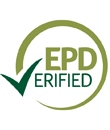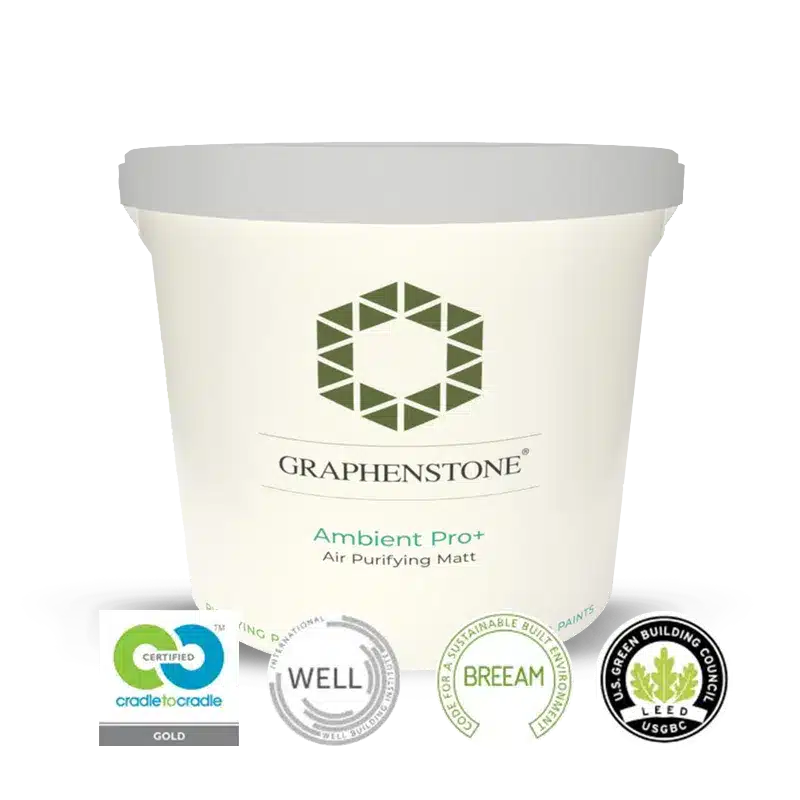What are Environmental Product Declarations for Paints
The Importance of Environmental Product Declarations When Specifying Paints.
The Construction industry is responsible for a significant proportion of the world’s Greenhouse gas emissions and other environmental impacts. However, there is a growing movement towards sustainable construction, which aims to reduce the environmental impact of buildings throughout their entire lifecycle, from the extraction of raw materials to the demolition and disposal of the building. This shift towards sustainability has given rise to various tools and methodologies, including Environmental Product Declarations (EPDs). The number of Environmental Product Declarations published has surged in the last two years. As the construction industry strives to embrace sustainable practices, the demand for product- and project-specific EPDs is growing rapidly.
Understanding Environmental Product Declarations
EPDs provide transparent and comparable information about the environmental impact of a product throughout its lifecycle and help stakeholders make informed decisions that align with sustainability goals. EPDs can be used by architects, engineers and other decision-makers to select building materials and products with a lower environmental impact. They are also important for achieving green building certifications, such as LEED, WELL and BREEAM with many green building rating systems requiring projects to earn points for using building materials with EPDs. As a result as environmental regulations become more stringent, EPDs are often required for compliance. In many regions, construction projects are mandated to meet certain sustainability criteria, and EPDs are a valuable tool for demonstrating adherence to these requirements. Furthermore, EPDs will play a fundamental role in public sector low-carbon procurement in the near future.
What is EPD Verification?
EPD stands for an Environmental Product Declaration (EPD) it is a transparent and verified document that provides information about the environmental impact of a product throughout its lifecycle. It is based on an assessment of various factors, including raw material extraction, manufacturing processes, energy consumption, emissions and waste generation.
EPD Verification involves a rigorous process conducted by independent third-party organisations to ensure the accuracy and completeness of the information provided in the EPD. This verification process ensures that the EPD meets internationally recognized standards, such as ISO 14025 and EN 15804.
In EN 15804 the impacts of construction products are modelled over four life cycle stages:
- The product stage (A1-A3) showing the impacts of manufacture and the supply chain from the “cradle to gate”.
- The construction stage (A4-A5) showing the impacts of transport and installation on site.
- The use stage (B1-B7) showing the impacts of any emissions in use, maintenance, expected repair or replacement and any energy or water consumed in use.
- The end of life stage (C1-C4) showing the impacts of demolition or deconstruction, transport to waste processing and any recovery or disposal processes “to grave”.
The purpose of EPD Verification is to provide consumers, businesses, and decision-makers with reliable and comparable information about the environmental performance of products. By having verified EPDs, manufacturers demonstrate their commitment to transparency and sustainability. This helps consumers make informed choices and supports the shift towards more environmentally friendly products.
In the context of paints, EPD Verification assures that the paint manufacturer has accurately assessed and disclosed the environmental impacts associated with their product. This includes factors such as carbon footprint, VOC emissions, CO2 absorption and other relevant metrics.
How Do I Compare Paints Environmental Impact?
Most paint product comparisons report and assess the Global Warming Potential (GWP) during the production and transport stages (A1-3) although the transport (A4) is closely linked to the volume solids of the paint and paint application stage (A5), is also of significant importance as harmful VOCs are often emitted from paints during the drying and curing phase. In addition some lime paints such as Ambient Pro+ actually absorb CO2 during this process creating a significant reduction in the cradle to gate GWP.
EPD Verified paints are considered more sustainable and environmentally friendly, offering a greener alternative in the market. By choosing EPD Verified paints, individuals and businesses can make informed decisions, ensuring they are contributing to a cleaner and healthier environment. EPD Verification brings credibility and accountability to the claims made by manufacturers regarding the environmental performance of their products.
GWP is measured in kg/m2 of CO2 e, which is a unit given to greenhouse gas emissions as an equivalent in CO2. Comparing EPD figures across brands enables a simple mathematical calculation to assess the difference in CO2e/m2 for each product. This difference when multiplied by the surface area in square metres to be painted will give you the CO2e saving in kilos for a project.
For example Ambient Pro+ has a low Carbon Footprint, EPD Verified with a Global Warming Potential (GWP) of 0.089 kg/m2 C02e per coat. Compare this with a commercially available Airpure matt paint from a leading supplier which has a GWP of 0.492 kg/m2 CO2e.
Consider a large commercial building project, such as a new hotel and spa facility, that requires all the interior walls and ceilings painting with a washable, low odour matt emulsion, in total 15,000 square metres requiring two coats of paint. Ambient Pro+ would have a carbon footprint over stages A1-3 of 2,670kgs CO2e. The Airpure matt would have carbon footprint of 14,760kgs.
During the application stage A5, Ambient Pro , as it is a pure lime paint, will absorb C02 , the majority in the first 30 days, at a rate of 0.36kg/lt. A project of 15,000sq metres would require 1667 litres of paint, absorbing 600kg of CO2. This reduces the overall carbon footprint for stages A1-5 , the actual carbon footprint for Ambient Pro+ will be 2070kgs, a saving of 12,690kg CO2e on the project compared to the Airpure paint.
Airpure paints are good quality paints with low VOCs , many low cost trade paints and clay paints currently in use in painting commercial buildings have no EPD verification. The C02e savings compared to these non verified paints will be significantly higher. In the next few years many of the current trade paints will be withdrawn from the market as their lack of environmental credentials will restrict their use.
Conclusion
Environmental Product Declarations play a crucial role in sustainable construction by providing comprehensive and transparent information about the environmental impact of construction materials. Selecting the products with the best environmental credentials will have a significant impact on the environment, the embodied carbon of the building, its retained value and ultimately the health and wellbeing of those that live or work in the building.





